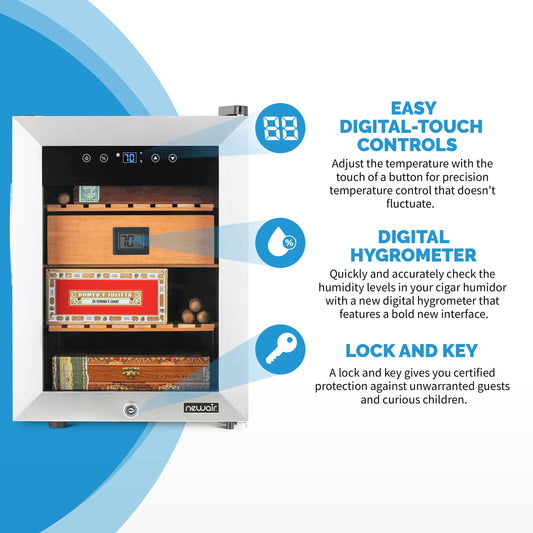ALL Cigar Humidors
5 Results
-
Newair® Electric Cigar Humidor in Bla...
The Newair 1,500-Count Electric Cigar Humidor in a sleek black finish combines advanced...Regular price $2,094.99Unit price perPay over time with Affirm. See if you qualify at checkout.
-
Find Your Perfect Wine Fridge
Single or dual zone — Newair has the right fit for every collection.
SHOP WINE FRIDGES -
Newair® Electric Freestanding Cigar H...
The Newair 840-Count Electric Freestanding Cigar Humidor with Built-In Humidification S...Regular price $1,739.99Unit price perPay over time with Affirm. See if you qualify at checkout.
-
Newair® Electric Cigar Humidor with O...
Protect your collection with the Newair® 250-Count Electric Cigar Humidor with Opti-Tem...Regular price $534.99Unit price perPay over time with Affirm. See if you qualify at checkout.
-
Newair® x Boveda Electric Cigar Humid...
Experience cigar storage at its finest with the Newair x Boveda 500-Count Cigar Humidor...Unit price per$884.99Sale price $649.99Pay over time with Affirm. See if you qualify at checkout.
Sale -
Newair® Electric Cigar Humidor, 250-C...
The Newair 250-count Electric Cigar Humidor evenly distributes cool air and locks in mo...Regular price $299.99Unit price perPay over time with Affirm. See if you qualify at checkout.
Sold out












